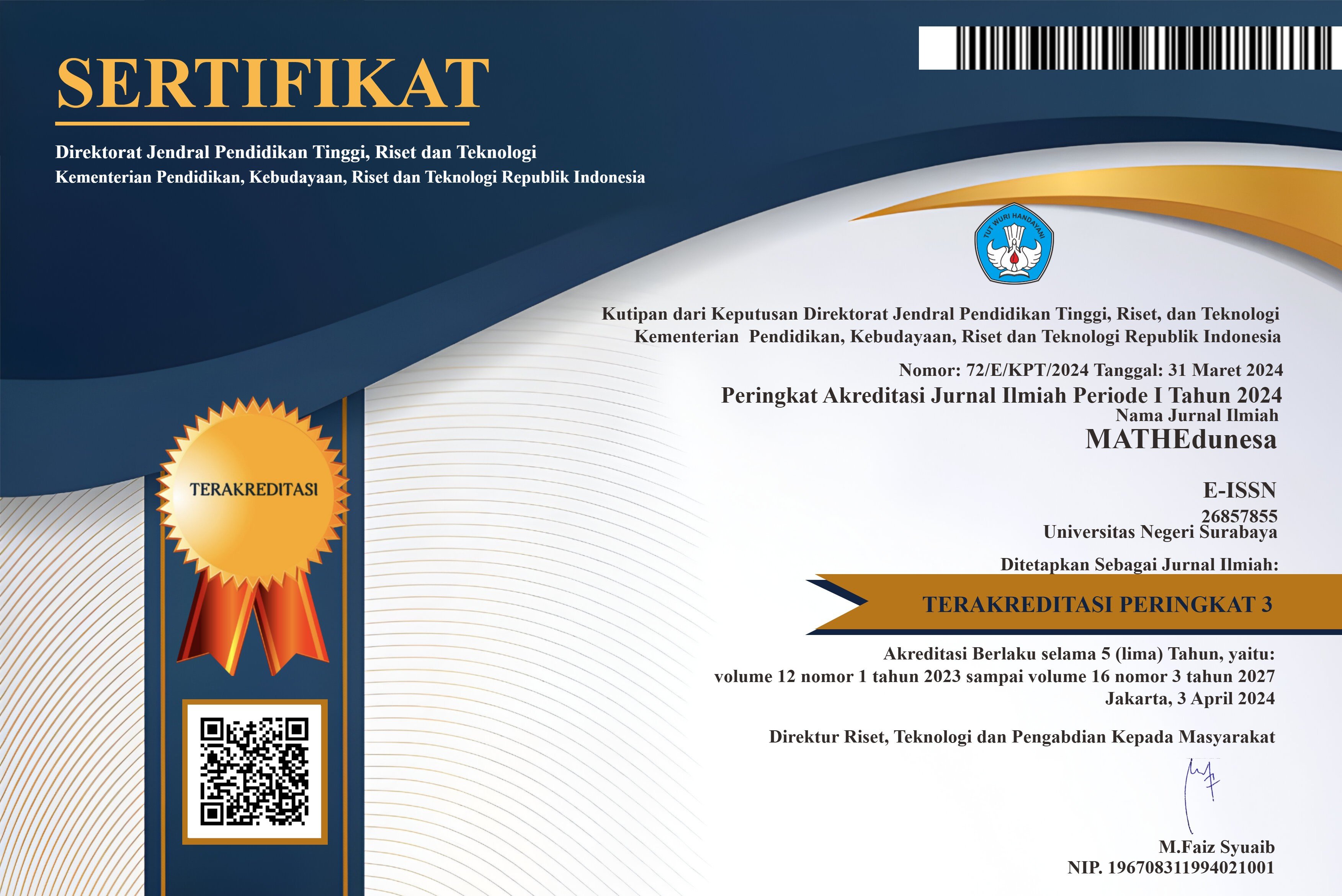Penalaran Matematis Siswa SMP dalam Memecahkan Masalah Sistem Persamaan Linear Dua Variabel (SPLDV) Ditinjau dari Gaya Belajar
DOI:
https://doi.org/10.26740/mathedunesa.v14n2.p388-409Abstract
This research aims to describe the mathematical reasoning of junior high school students with visual, auditory, and kinesthetic learning styles in solving SPLDV problems. This research used a qualitative descriptive approach. The subjects of this study were three junior high school ninth-grade students with different learning styles (visual, auditory, and kinesthetic), high equivalent mathematics ability, and the same gender. The results showed that the three students' mathematical reasoning in understanding the problem included explaining the problem in their own words, identifying all known information, stating the sufficiency of information, and representing the problem in mathematical form, accompanied by reasons. Visual students identified all questions, while auditory and kinesthetic students only had most of them, accompanied by reasons. In making plans, all three students compiled strategies involving concepts accompanied by reasons. All three students applied the strategy in implementing the plan and gave reasons at each step. In re-examining, all three students evaluated the correctness of the solution accompanied by reasons, but auditory students did not perform a final check. Kinesthetic students draw conclusions thoroughly, while visual and auditory students only cover part of it, accompanied by reasons. Through this research, teachers can design learning strategies to optimize students' mathematical reasoning in solving SPLDV problems.
Downloads
Downloads
Published
Issue
Section
 Abstract views: 233
,
Abstract views: 233
, PDF Downloads: 157
PDF Downloads: 157




